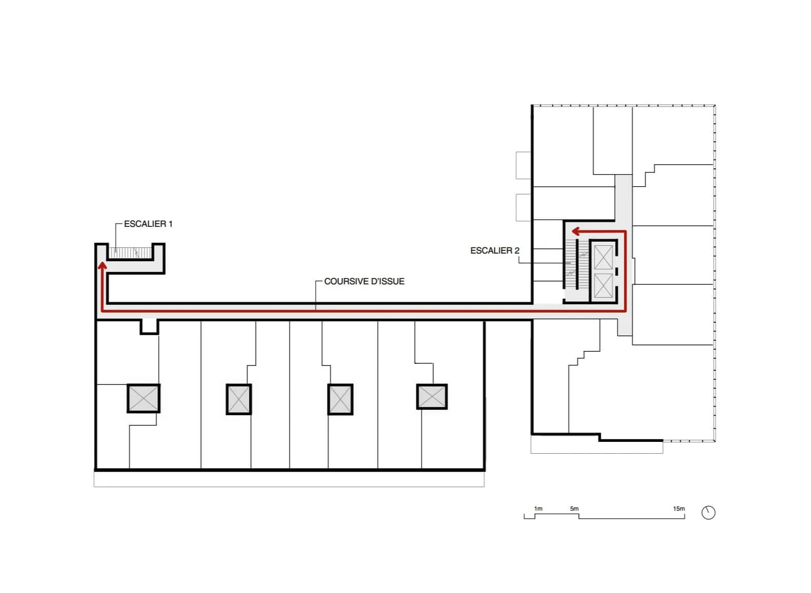Montreal is, in many ways, a city of winding exterior stairs. If you’ve been there, then you know. The city is overwhelmingly a city of low-rise apartments (less than five storeys). And with these, comes lots of exterior circulation. But this tradition doesn’t just apply to older buildings. Here is a contemporary tall-building example which follows a similar approach.
Designed by MSDL Architects, the project, called The Laurent & Clark, consists of two tower volumes. They read as two separate towers, but they’re connected and share egress paths. On the east side is a conventional “scissor stair” tucked behind two elevators. And on the other end, connected by an open-air corridor, is an exterior exit stair that runs all the way up the tower.
Here is a circulation diagram via Azure:

This is novel (at least in this part of the world). The suites in the west tower are all dual aspect; meaning, they have windows on both ends.
They also have direct elevator access (see cores above), which means a lot less non-revenue generating circulation space. I mean, if you think about it, the open-air corridor on the north side of the west tower is akin to building a simple balcony. Extend the slab and add a guard rail. And so you could argue that this portion of the building has a near 100% efficiency factor.
However, the downside is that you need more elevators. Here, it looks like they have 6 for their 356 suites. That’s an overall ratio of just under 60 suites per elevator, which is lower (i.e. better) than what you’d typically find in a conventional tower. The crude rule of thumb is 1 elevator for every 100 suites. That said, these direct-access suites would be premium.
But perhaps the most important takeaway is this: If cold and snowy Montreal is cool with open-air corridors and exterior exit stairs, then maybe your city should be as well.
